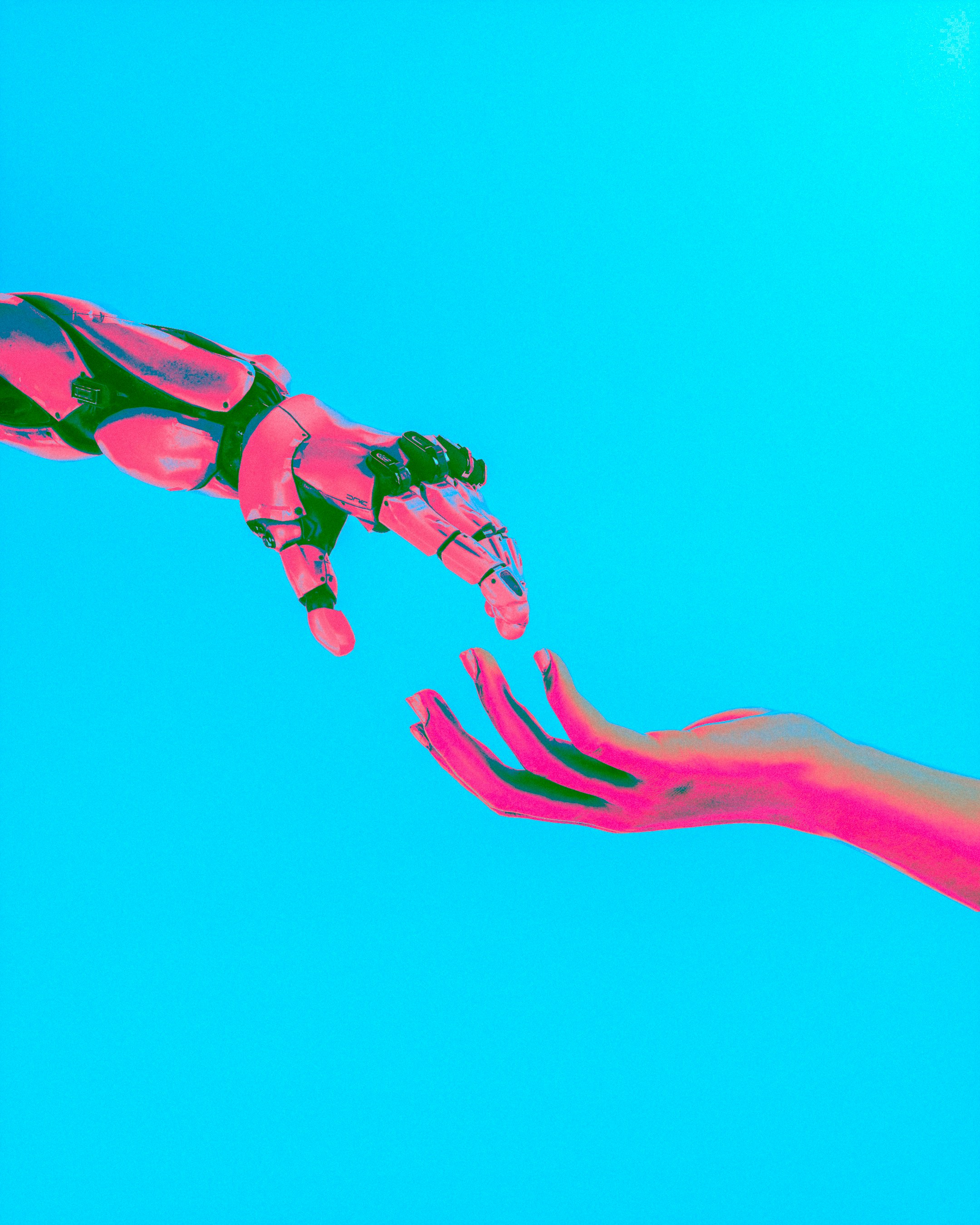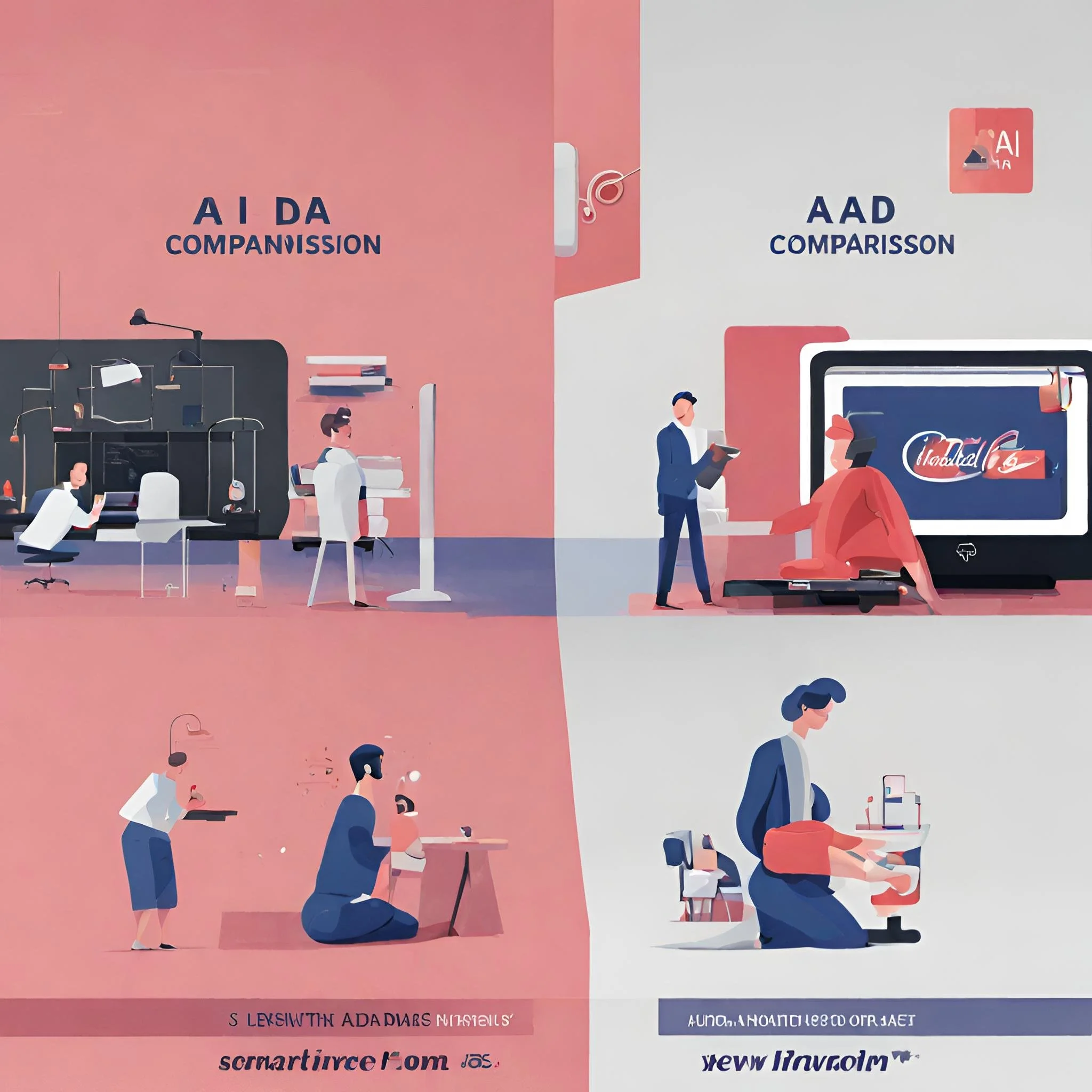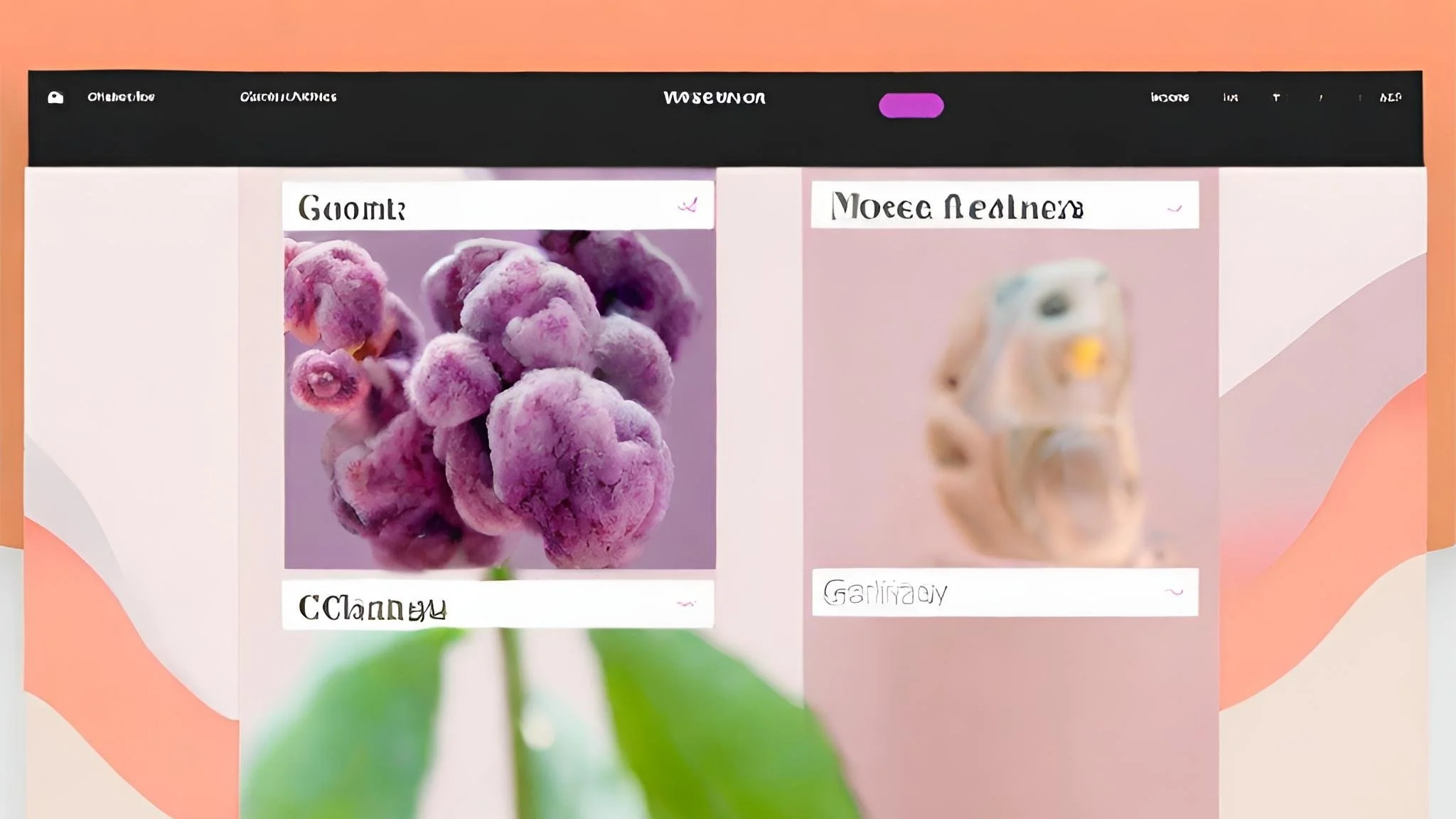Revolutionising Ad Creativity: How Generative AI Transforms Brands and Boosts Engagement

In the fast-paced digital world, businesses must continuously adapt their advertising strategies to keep up with ever-changing technologies and consumer preferences. To thrive and maintain audience attention, embracing innovation is essential. While Generative AI may be unfamiliar to some, it has been quietly revolutionising the advertising sector with its ability to explore new realms of creativity and interaction. With that in mind, let’s delve into the capabilities of Generative AI and its impact on advertising, particularly in terms of fostering creativity and enhancing audience engagement in this era.

Evolution of Ad Creativity
Let's kick things off by diving into the fascinating journey of ad creativity. We'll trace its evolution from the old-school methods to the cutting-edge techniques made possible by modern tech like Generative AI. Understanding this shift is key to grasping just how much of a game-changer Generative AI is in revolutionising the creative side of advertising.
So back in the day, ads were all about manual labour and gut instincts. Think print, radio, and TV ads – they were effective, sure, but they lacked the scalability and precision needed for today's digital world. Fast forward to the digital age, and everything changes. The internet and digital tech open up a whole new world of possibilities for business owners. Suddenly, it's all about online platforms, dynamic ad formats, and personalised targeting strategies that really speak to consumers.

Technological advancements have been a driving force behind the evolution of ad creativity. From graphic design software to programmatic ad platforms, technology has empowered advertisers to push creative boundaries like never before. And here's where Generative AI comes in - it is the latest frontier in ad creativity; using machine learning and neural networks to churn out all kinds of creative assets – images, videos, ad copy, you name it. With Generative AI, advertisers can dream up, create, and distribute ad campaigns in ways that were previously unimaginable. It's a whole new world of possibilities, and we're just scratching the surface of what's possible.
Exploring the Functionality of Generative AI in Advertising
Generative AI technology stands as a significant advancement in the advertising realm, providing fresh solutions for crafting engaging ad content. Essentially, generative AI utilises advanced algorithms and neural networks to independently produce a variety of creative elements, spanning images, videos, ad copy, and design layouts. Unlike traditional methods relying on human effort and manual processes, generative AI operates autonomously, sifting through extensive data sets and recognising patterns to generate customised content that connects with specific target audiences. This technology streamlines ad creation, trimming workflows, cutting production costs, and enabling advertisers to explore a wide array of creative ideas in real-time.
A standout application of generative AI in advertising lies in its capacity for dynamic content generation. By leveraging machine learning algorithms, you can craft personalised ad experiences tailored to individual preferences and behaviours. For instance, generative AI can analyse user data on-the-fly to dynamically adapt ad messaging, imagery, and offers based on factors like demographics, browsing habits, and past interactions with the brand. This dynamic content generation approach empowers business owners to deliver highly relevant and captivating ads that grab audience attention and drive conversions.
Across the digital advertising landscape, numerous generative AI tools and platforms have emerged, empowering owners such as yourself to leverage this technology in your campaigns. For example, platforms like Phrasee specialise in using generative AI to optimise email subject lines and ad copy for maximum impact. Similarly, companies like Adobe offer AI-powered creative tools enabling advertisers to generate personalised content at scale, from dynamic display ads to tailor-made landing pages. These instances showcase how generative AI is reshaping the advertising industry, offering advertisers inventive solutions for crafting compelling, personalised ad experiences resonating with audiences in today's digital landscape.
Generative AI takes ad creativity to the next level. This technology isn't just about automating tasks – it's about sparking new ideas and pushing creative boundaries in ad campaigns. By leveraging Generative AI, advertisers can explore uncharted territories of creativity, experimenting with fresh concepts and innovative approaches that resonate with audiences on a deeper level. From generating eye-catching visuals to crafting compelling ad copy, Generative AI offers a wealth of creative possibilities that can breathe new life into advertising campaigns.
“88% of respondents are actively using or experimenting with AI technologies in their marketing efforts.”
Furthermore, how does AI-generated content break through creative barriers? Well, it's all about thinking outside the box and embracing the unexpected. Generative AI has the power to churn out a vast array of content variations, allowing advertisers to explore different angles and perspectives that may have been overlooked using traditional methods. This opens the door to unconventional ad concepts and unique storytelling opportunities that capture audience attention and leave a lasting impression. With Generative AI, advertisers can unleash their creativity and create ads that stand out in today's crowded digital landscape.

According to a survey by Forbes, the findings reveal a significant uptick in AI adoption among marketing professionals. An impressive 88% of respondents are actively using or experimenting with AI technologies in their marketing efforts. Additionally, 12% plan to explore AI in the future, indicating a growing interest in its potential. In terms of application, marketing teams are primarily utilising AI for content personalisation (47%), chatbots (47%), content production and creation (44%), and product or content recommendations (37%). Notably, these areas highlight the pivotal role of AI in enhancing content creation processes.
Overall, generative AI is becoming increasingly integrated into various aspects of marketing, both internally and externally. This trend underscores its importance in refining marketing strategies and fostering deeper engagement with audiences. In addition, the research highlights the primary ways marketing teams are employing generative AI. These encompass not only asset creation (52%), as previously mentioned, but also customer engagement and retention (47%), and data analytics (39%).
Looking at these applications collectively, it's evident that content creation stands out as the predominant use of generative AI within marketing teams. Content-related tasks such as asset creation, brainstorming, editing, and personalised content creation are all significant areas where AI is revolutionising marketing practices.
Enhancing Brand Engagement
We'll delve deeper into how generative AI-driven ads are transforming audience engagement. These ads go beyond typical promotions, delivering dynamic and personalised content designed to resonate with viewers on a personal level. Generative AI empowers advertisers to create ads tailored to their target audience, utilising advanced algorithms to generate relevant and impactful visuals and messaging. Whether it's captivating imagery or compelling copy, AI-driven ads have the ability to cut through the clutter and make a lasting impression on consumers.
Moving on to real-world examples, let's explore how AI-generated content is elevating brand engagement metrics. Case studies consistently show that ads created with generative AI outperform traditional ads in terms of engagement, click-through rates, and conversions. For example, a prominent retail brand saw a significant increase in click-through rates and sales by using generative AI to personalise product recommendations in its online ads. Similarly, a travel company experienced higher levels of brand recall and customer engagement by incorporating AI-generated visuals into its dynamic ad campaigns. These examples underscore the impact of generative AI on brand engagement, demonstrating its ability to foster meaningful interactions with consumers.
Moreover, generative AI-driven ads offer flexibility and scalability advantages. Unlike traditional ads requiring manual updates, AI-generated ads can be easily adjusted in real-time to reflect changing market dynamics, audience preferences, or campaign goals. This adaptability enables advertisers to remain agile in today's fast-paced digital landscape, ensuring their ads remain relevant and effective in capturing audience attention. With generative AI, brands can unlock new levels of brand engagement, establishing deeper connections with consumers and driving sustained business growth.

Challenges & Considerations
As we delve into the realm of generative AI in advertising, it's important to recognise the potential challenges and limitations associated with this innovative technology. One key challenge is the complexity of implementing generative AI systems, which often require specialised technical expertise and resources. Advertisers may face hurdles in effectively integrating generative AI into their existing workflows and platforms, leading to potential delays or setbacks in campaign execution. Additionally, the sheer volume of data required to train generative AI models can pose logistical challenges, particularly for smaller advertisers with limited access to extensive data sets.
Another consideration is the risk of over-reliance on generative AI in the creative process. While AI-driven ads offer unprecedented capabilities for generating compelling content, there's a danger of sacrificing brand authenticity and the human touch in favour of automated solutions. Advertisers must strike a balance between leveraging generative AI to enhance creativity and maintaining the unique voice and identity of their brand. This requires careful oversight and collaboration between creative teams and AI developers to ensure that AI-generated content aligns with the brand's values and resonates with its target audience.
To address these challenges, advertisers can take proactive steps to mitigate risks and maximise the benefits of generative AI in advertising. This may involve investing in training programs to upskill employees on AI technologies, fostering a culture of innovation and experimentation within the organisation, and establishing clear guidelines and protocols for integrating AI into the creative process. Additionally, advertisers should prioritise transparency and authenticity in their AI-driven campaigns, clearly communicating to consumers when AI technology is being used and ensuring that AI-generated content reflects the brand's personality and values. By navigating these challenges thoughtfully and strategically, advertisers can harness the power of generative AI to drive meaningful engagement and deliver impactful advertising campaigns in today's digital landscape.
Future Implications and Trends
Alright, let's take a peek into the crystal ball and see where generative AI is headed in the world of advertising. The future looks pretty bright, with plenty of exciting developments on the horizon. One thing's for sure: generative AI is here to stay, and it's only going to become more integral to the ad creative process. As technology continues to evolve, we can expect to see even more innovative uses of generative AI in advertising campaigns, from hyper-personalised content to immersive experiences that blur the lines between digital and reality.
So, what are some of the emerging trends and technologies shaping the future of AI-driven ad creativity? Well, for starters, we're seeing a growing emphasis on augmented reality (AR) and virtual reality (VR) experiences in advertising. These immersive technologies offer advertisers new ways to engage with consumers, creating interactive ad experiences that capture attention and drive brand engagement. We're also seeing advancements in natural language processing (NLP) and voice recognition technology, opening up new possibilities for conversational ads and voice-powered interactions.
As we look ahead, it's clear that generative AI will continue to push the boundaries of creativity in advertising, enabling brands to deliver more personalised, engaging, and immersive ad experiences. From AR-enhanced campaigns to voice-powered interactions, the future of AI-driven ad creativity is full of exciting possibilities. So buckle up and get ready for a wild ride – the future of advertising is shaping up to be pretty darn awesome.
The emergence of Generative AI marks a pivotal moment in advertising, ushering in a transformative era of consumer engagement. From traditional print and broadcast mediums to the dynamic digital landscape, advertising has continually evolved to capture audience attention and prompt action. Generative AI represents the latest evolution in this journey, offering advertisers unprecedented capabilities to create personalised and impactful ad experiences.
Looking ahead, it is imperative for advertisers to recognize both the tangible impacts and ethical considerations associated with AI-driven ads. While AI technology offers unparalleled opportunities for creativity and engagement, there is a need to ensure authenticity and human connection are not sacrificed in pursuit of automation. Striking a balance between leveraging AI to enhance creativity and preserving the unique identity of brands is essential to building trust with consumers and fostering long-term brand loyalty.
Moreover, as AI continues to shape the advertising landscape, it is essential to consider its role in driving productivity and preparing for future advancements. By harnessing the power of AI-driven creativity, advertisers can unlock new levels of brand engagement and forge deeper connections with consumers. However, this journey must be approached with responsibility and foresight, ensuring that AI is used ethically and transparently to enrich lives and foster genuine connections in our ever-evolving digital ecosystem.
In this fast-paced world of advertising, Generative AI is undoubtedly here to stay, and its impact will only continue to grow. By embracing AI technology thoughtfully and strategically, advertisers can navigate this exciting frontier while maximising productivity and preparing for the future of advertising in the digital age.
Let us help your scale with confidence.
